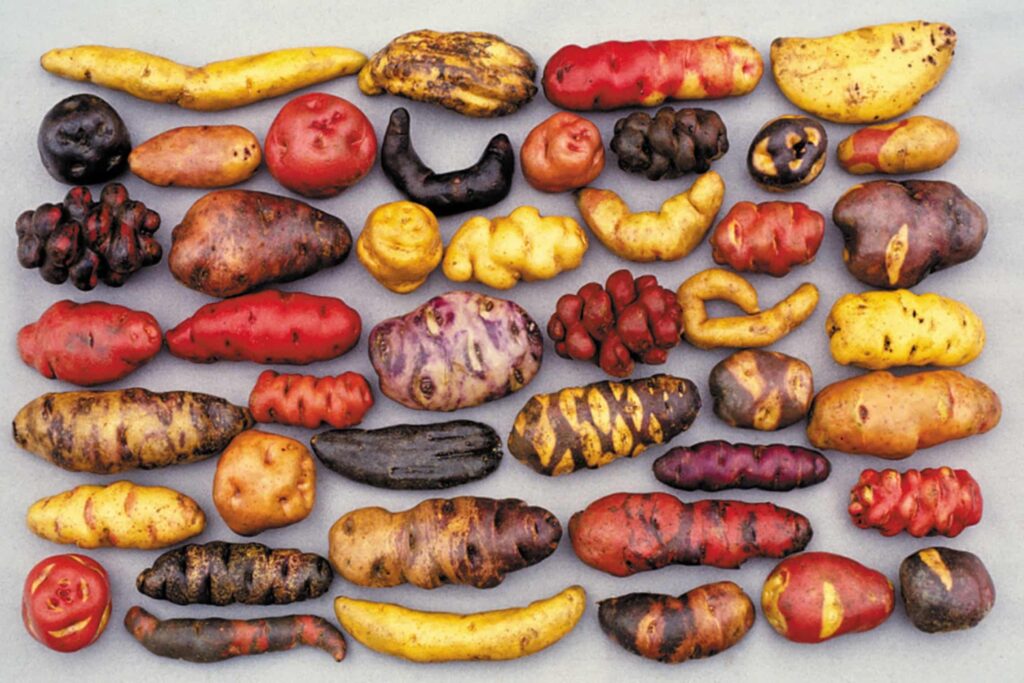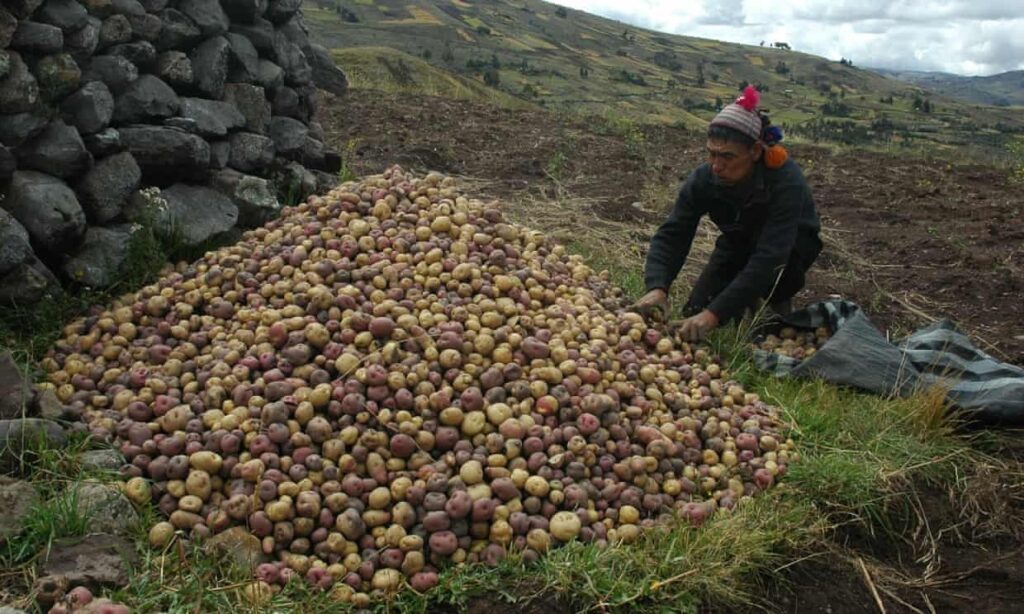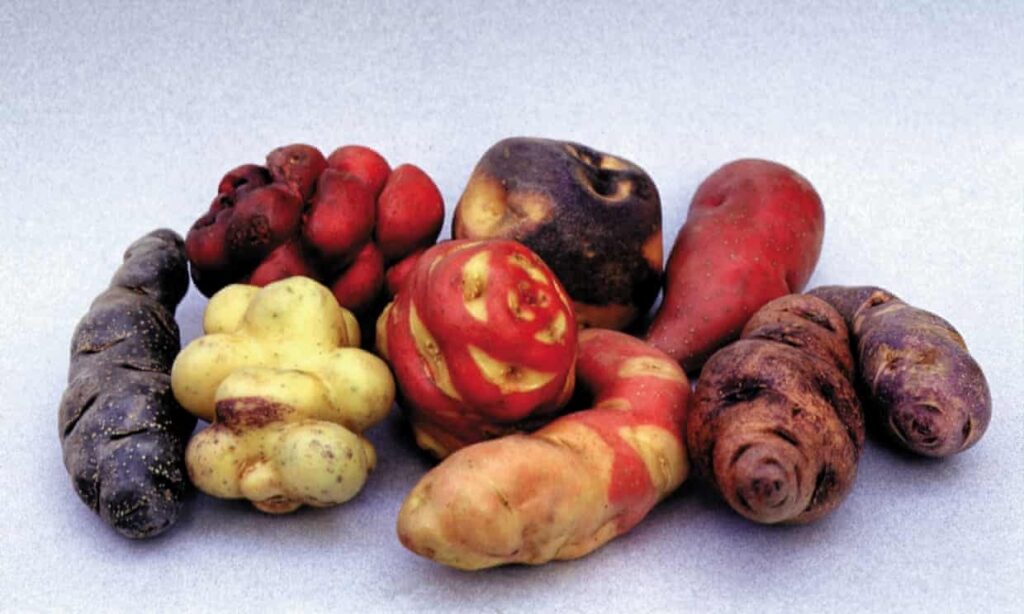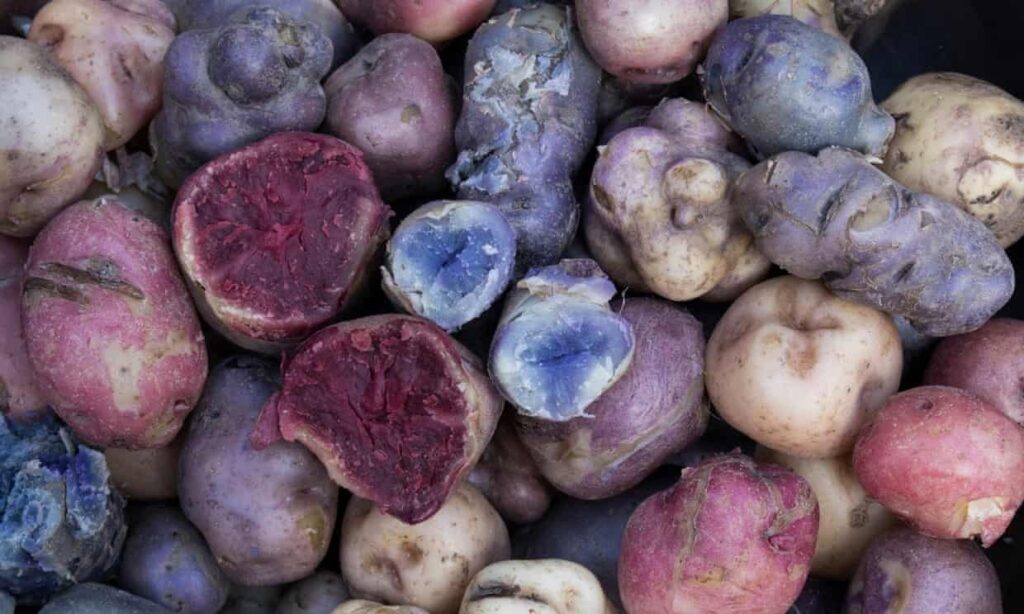
In the face of a rapidly changing climate and increasing threats to global food security, scientists have turned to a unique resource: Peru’s Potato Park. Located high in the Andes, this living museum is home to a vast diversity of potato varieties, providing a potential solution to the challenges posed by climate change.

The Potato Park, spanning 90 square kilometers in Cusco, preserves the ancestral knowledge of farmers and their traditional potato strains. By cultivating potatoes at different altitudes and in various combinations, agronomists are able to create new genetic expressions that can better withstand droughts, floods, and frosts.
The park boasts an impressive collection of 1,367 potato varieties, making it a living laboratory of potato diversity. These potatoes, domesticated 7,000 years ago by the ancestors of Peruvian farmers, hold the key to adapting to climate change. However, with global heating impacting the region, pests are moving uphill, forcing farmers to plant potatoes in the park’s upper reaches where land availability is limited. To address this challenge, park residents are conducting tests to assess the resistance of native potato varieties to frost, hail, intense sunlight, and the Andean potato weevil.

Preserving and utilizing the diversity of potato varieties is crucial for breeding new strains that can thrive in changing climates. While scientists explore genetic engineering in laboratories, the farmers in Potato Park have been practicing this work for thousands of years, often mixing crops with wild relatives to enhance resilience.
The results of their efforts are stored in an on-site seed bank and in the world’s largest in vitro gene bank at the International Potato Centre in Lima. These collections serve as vital resources for addressing global hunger and promoting sustainable agriculture. For instance, the Centre’s work in Africa and Asia, particularly in China, has contributed to combatting food shortages and generating income through the cultivation of fast-maturing, biofortified potatoes.

Maintaining biodiversity is critical as climate change accelerates. The United Nations Food and Agriculture Organization estimates that 75% of crop diversity was lost between 1900 and 2000, and the changing climate threatens the survival of up to 22% of wild relatives of food crops by 2055.

As soil degradation intensifies and crop resilience becomes increasingly important, the efforts of Potato Park’s guardians offer hope for feeding the world. By leveraging the knowledge of local farmers and preserving the diversity of potato varieties, Peru’s Potato Museum could play a vital role in addressing the global food crisis.

Leave a Reply